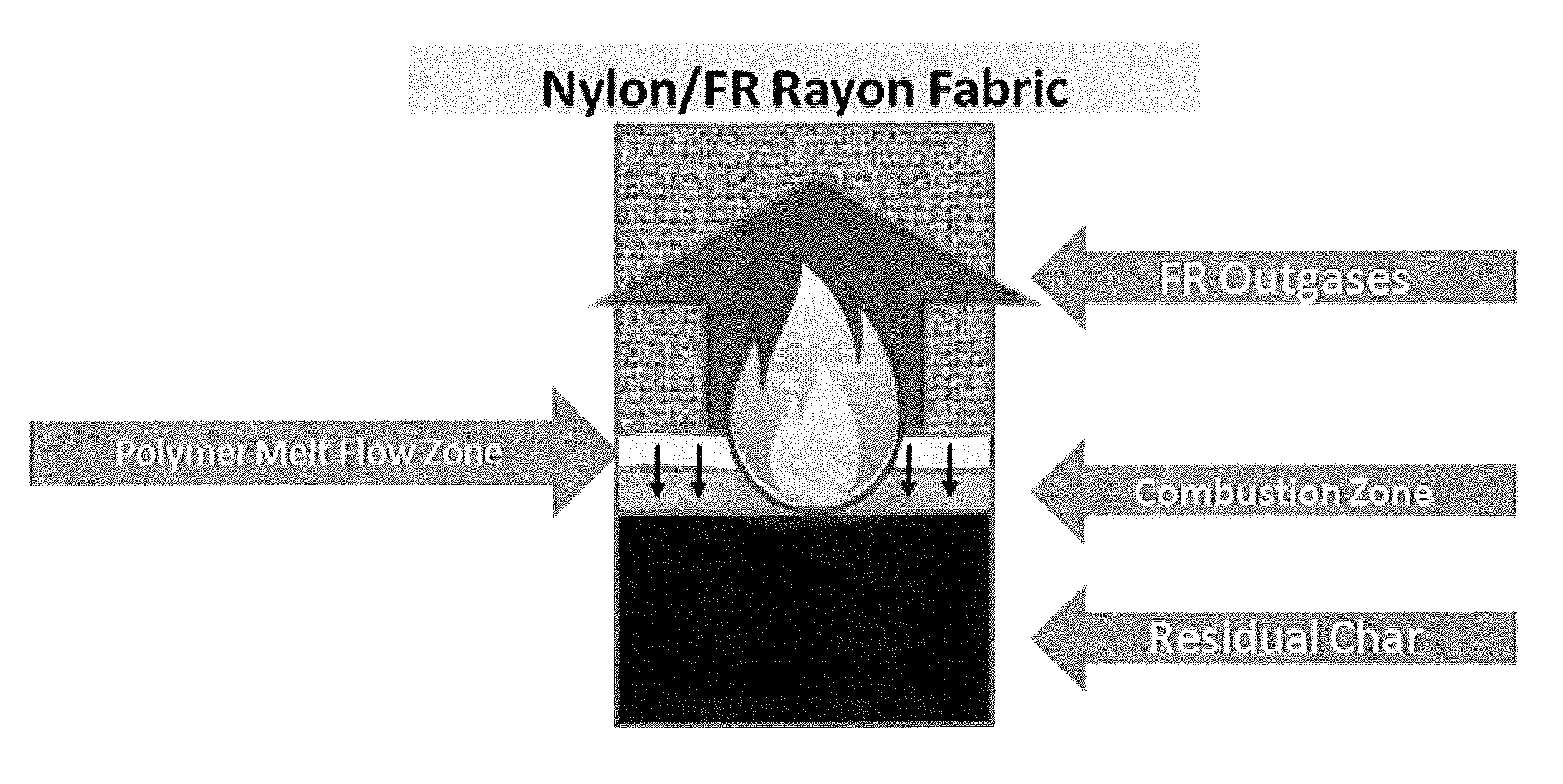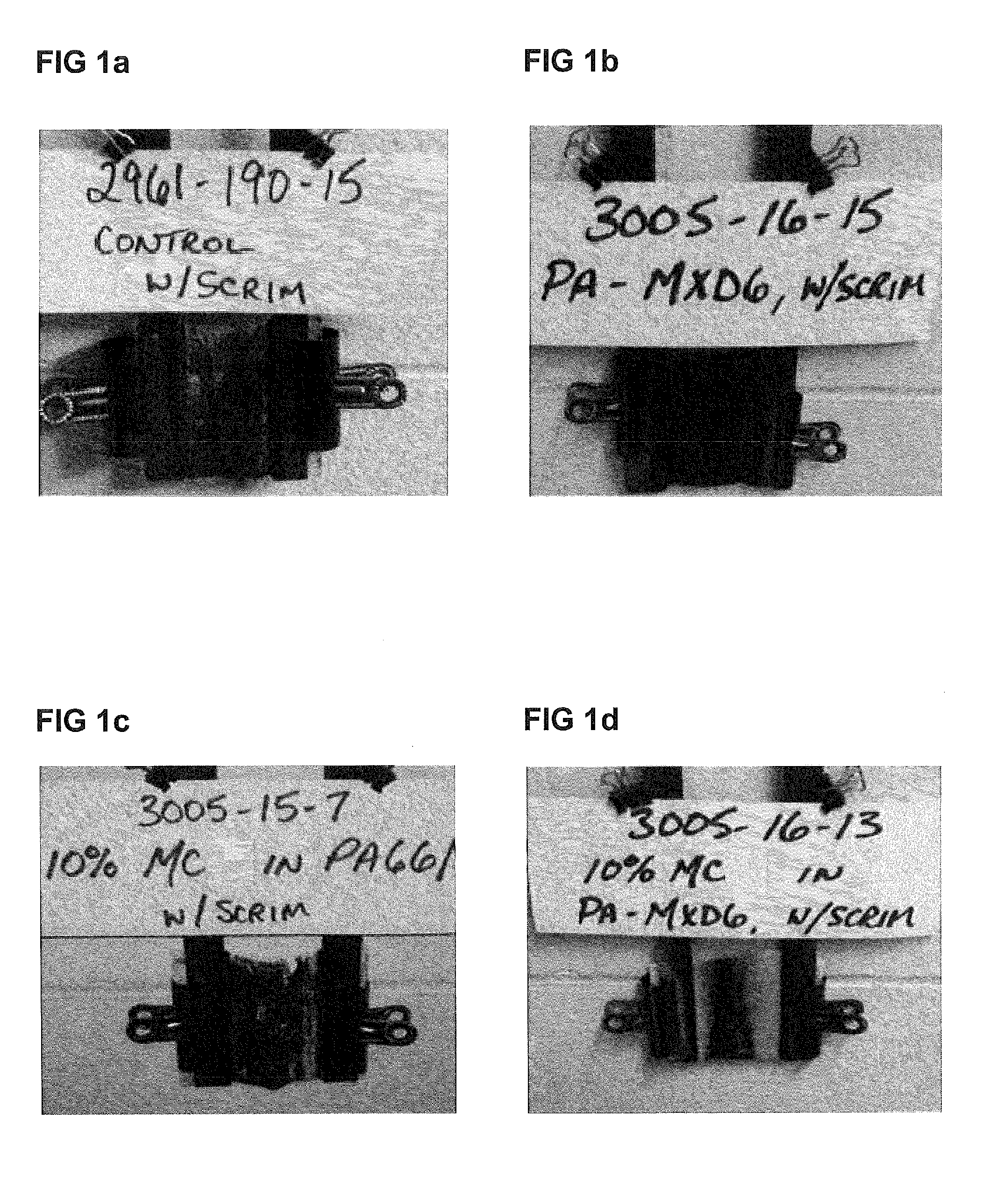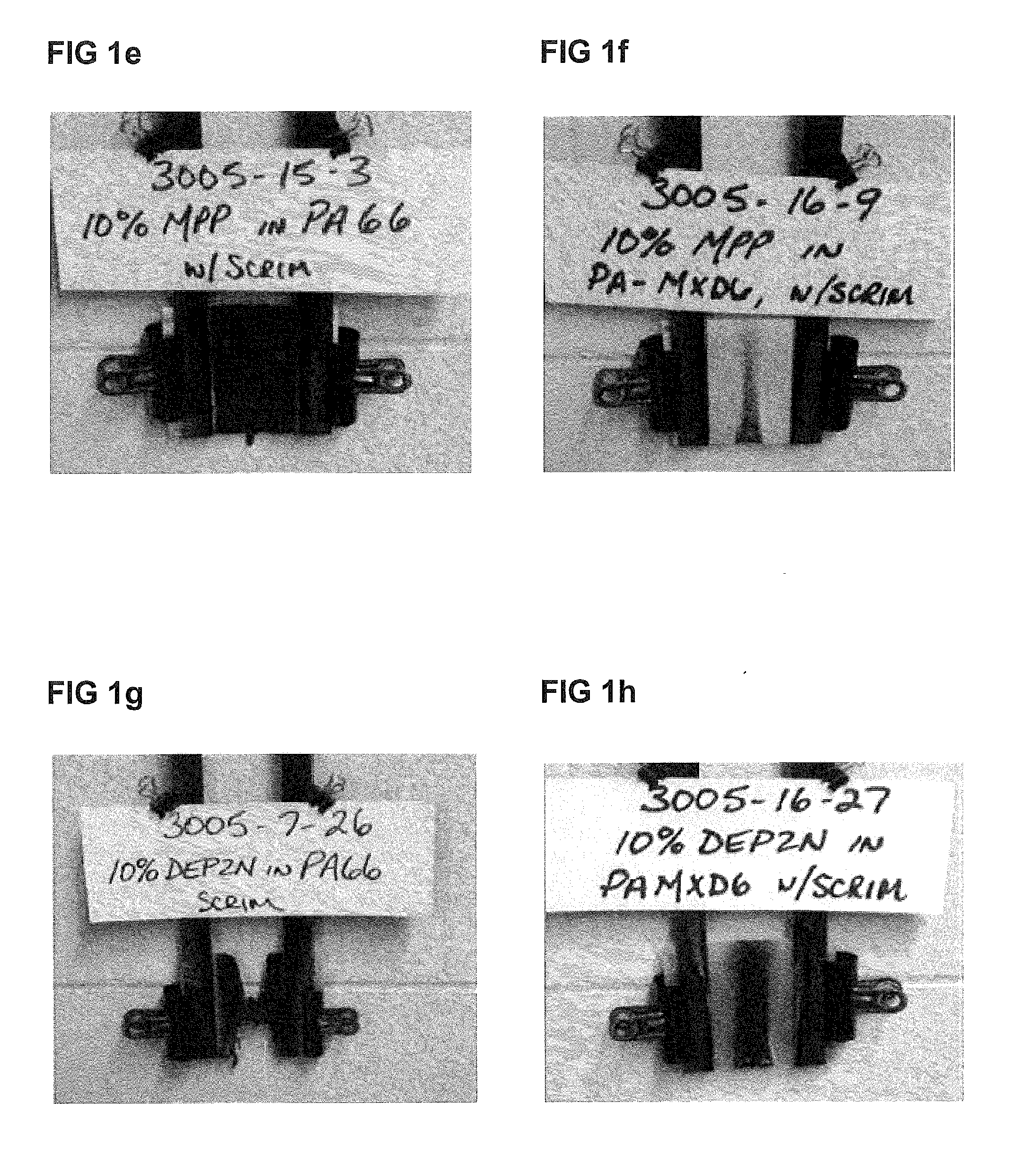Flame retardant fibers, yarns, and fabrics made therefrom
a technology fabrics, applied in the field of flame retardant fibers, yarns and fabrics, can solve the problems of poor flame retardancy and additional injuries of wearers, and achieve the effects of preventing dripping and sticking, reducing the “scaffolding effect”, and good flame retardancy
- Summary
- Abstract
- Description
- Claims
- Application Information
AI Technical Summary
Benefits of technology
Problems solved by technology
Method used
Image
Examples
examples 1-7
Flame Retardancy of Molded Laminates Made with Various Aspects of the Disclosed Flame Retardant Fiber
[0038]Test laminates were prepared using the technique above. Example 1 is made with MXD6 and no flame retardant additive. Example 2 is made with MXD6 and 10% w / w MPP (melamine polyphosphate) additive. Example 3 is made with MXD6 and 10% w / w MC (melamine cyanurate) additive. Example 4 is made with MXD6 and 10% w / w DEPZn (zinc diethylphosphinate) additive. Example 5 is made with MXD6 and 10% w / w DEPAI (aluminum diethylphosphinate). Example 6 is made with MXD6 and 2% w / w SiTA (silicotungstic acid). Example 7 is made with MXD6 and 20% w / w MC additive. Results are reported in Table 1 below.
example 8-18
Flame Retardancy of Fabrics Made with the Disclosed Flame Retardant Fiber and Flame Retardant Rayon
[0041]In the following examples, flame retarding thermoplastic yarns were combined with a staple spun FR rayon yarn (Lenzing FR) and knit into a tube fabric. The blended fabric contained approximately 50 percent of each yarn. Fiber finishes and knitting oils were removed from the fabrics before flammability testing.
[0042]Example 8 is a fabric blend of flame retardant MXD6 fiber containing 2% w / w MPP additive with flame retardant rayon fiber. Example 9 is a fabric blend of flame retardant MXD6 fiber containing 5% w / w MPP additive with flame retardant rayon fiber. Example 10 is a fabric blend of flame retardant MXD6 fiber containing 10% w / w MPP additive with flame retardant rayon fiber. Example 11 is a fabric blend of flame retardant MXD6 fiber containing 2% w / w DEPAI additive with flame retardant rayon fiber. Example 12 is a fabric blend of flame retardant MXD6 fiber containing 5% w / w D...
PUM
| Property | Measurement | Unit |
|---|---|---|
| after-flame time | aaaaa | aaaaa |
| processing temperatures | aaaaa | aaaaa |
| melting temperatures | aaaaa | aaaaa |
Abstract
Description
Claims
Application Information
 Login to View More
Login to View More - R&D
- Intellectual Property
- Life Sciences
- Materials
- Tech Scout
- Unparalleled Data Quality
- Higher Quality Content
- 60% Fewer Hallucinations
Browse by: Latest US Patents, China's latest patents, Technical Efficacy Thesaurus, Application Domain, Technology Topic, Popular Technical Reports.
© 2025 PatSnap. All rights reserved.Legal|Privacy policy|Modern Slavery Act Transparency Statement|Sitemap|About US| Contact US: help@patsnap.com



